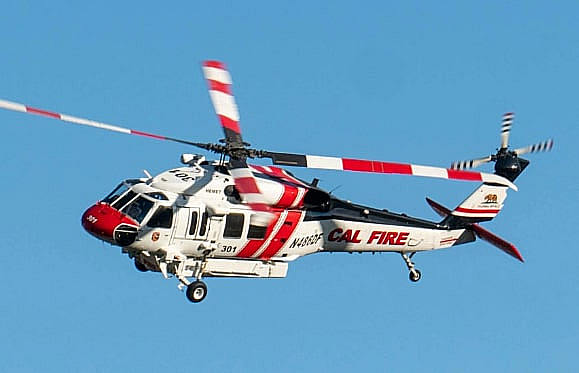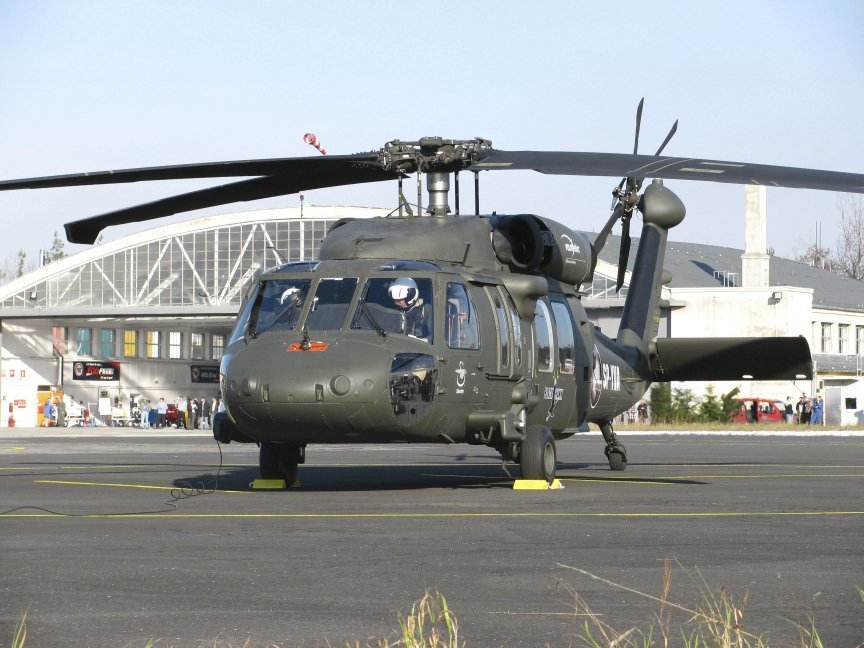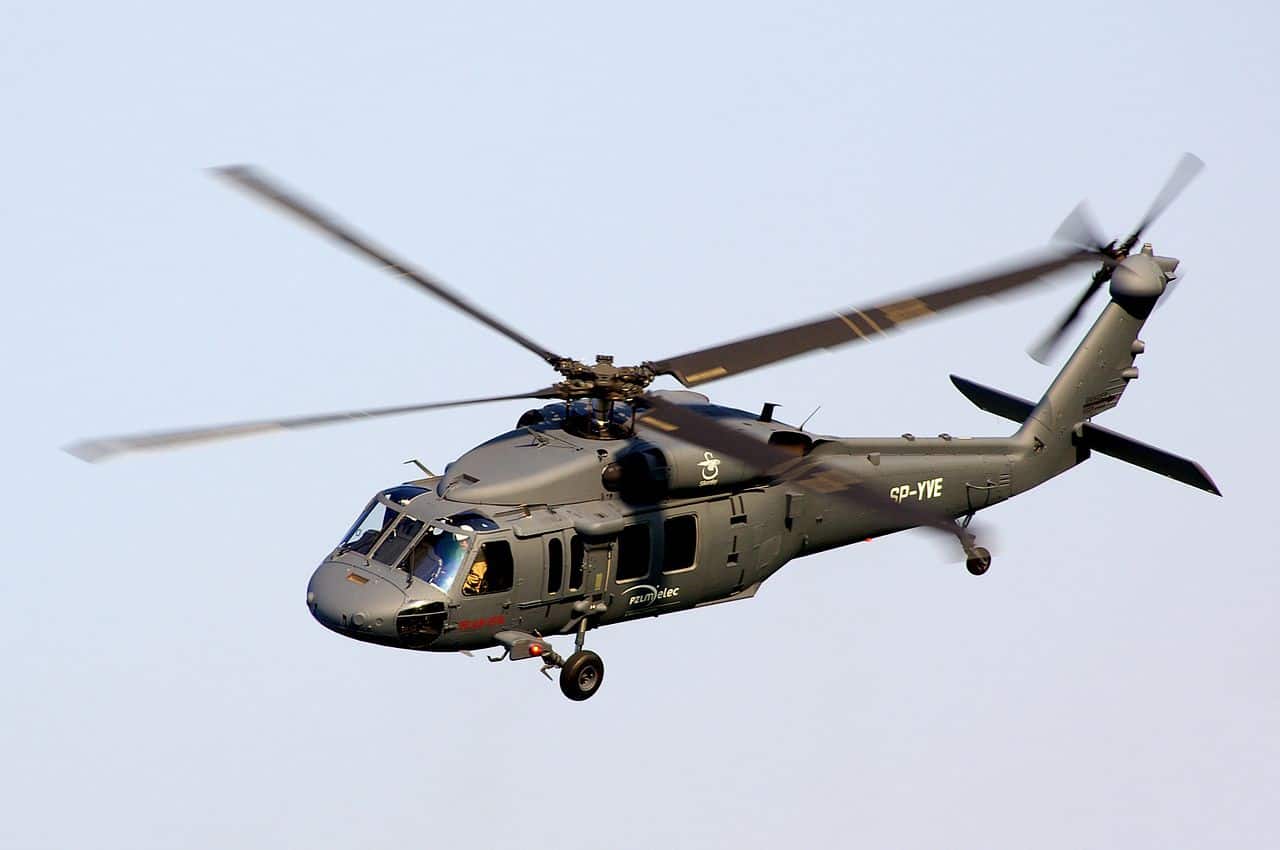Inside the Sikorsky S 70: What Sets This Helicopter Apart from Its Rivals
Inside the Sikorsky S 70: What Sets This Helicopter Apart from Its Rivals
Blog Article
High-Performance Multi-Role Rotorcraft Featuring Advanced Cockpit Technologies and Integrated Sensing Unit Equipments
The realm of rotorcraft innovation has actually seen notable developments in recent times, especially in the world of high-performance multi-role rotorcraft furnished with innovative cabin technologies and flawlessly incorporated sensing unit systems. These innovations have not just increased the functional capabilities of rotorcraft however have actually additionally significantly impacted contemporary aeronautics operations on numerous fronts. From boosted mission versatility to boosted functional performance, the convergence of advanced cockpit technologies and incorporated sensor systems has actually introduced a brand-new period of opportunities for rotorcraft applications. In the complying with conversation, we will discover the evolution of rotorcraft innovation, explore the world of advanced cockpit innovations, and analyze the ramifications of incorporated sensor systems on the operational flexibility and performance of modern rotorcraft.
Evolution of Rotorcraft Technology
The evolution of rotorcraft modern technology has been marked by significant advancements in the rules of aerodynamics, products, and propulsion systems, shaping the capacities and performance of modern rotorcraft. In addition, advancements in propulsion systems, consisting of a lot more powerful engines and ingenious propulsion technologies, have made it possible for rotorcraft to attain higher elevations, faster rates, and better hauls.
These innovations have not just changed the capacities of rotorcraft however have likewise broadened their applications across various markets, including military, industrial, and emergency situation services. The continual advancement of rotorcraft innovation remains to drive innovation in the area, pressing the boundaries of what is feasible and shaping the future of upright trip.
Advanced Cockpit Innovations
Building upon the fundamental innovations in the rules of aerodynamics, materials, and propulsion systems, the world of rotorcraft innovation now changes focus in the direction of introducing Advanced Cockpit Innovations. The integration of advanced technologies within the cabin atmosphere plays a crucial function in enhancing the functional capabilities, safety and security, and effectiveness of modern rotorcraft. sikorsky s 70. Advanced Cabin Innovations incorporate a wide selection of features developed to provide pilots with improved situational recognition, streamlined data management, and user-friendly control user interfaces
One of the essential developments in cabin layout is the execution of glass cabins, which change standard analog determines with high-resolution displays. These electronic systems use customizable designs, real-time information assimilation, and improved readability, enabling pilots to gain access to crucial details at a look. Moreover, progressed avionics systems, such as fly-by-wire controls and increased reality displays, are changing exactly how pilots engage with the aircraft, allowing for accurate control and boosted decision-making abilities.


Integrating advanced cabin developments not just enhances pilot efficiency but additionally adds to total goal performance and safety and security in complex operational environments. By leveraging advanced technologies within the cockpit, rotorcraft suppliers are setting brand-new criteria for operational excellence and objective success.
Integrated Sensing Unit Solutions
With the development of rotorcraft modern technology, the assimilation of advanced Integrated Sensor Solution has ended up being paramount in boosting operational effectiveness and safety and security. These Integrated Sensor Solutions include a wide selection of innovations that offer vital information for different features such as navigating, monitoring, targeting, and ecological monitoring. By seamlessly integrating sensing units like radars, cameras, lidar, and infrared systems right into rotorcraft, operators can profit from enhanced situational understanding, improved objective abilities, and decreased pilot work.
One key benefit of Integrated Sensor Solutions is their capacity to gather real-time information and supply actionable insights to pilots and goal operators. As an example, progressed radar systems can discover and track targets over cross countries, enabling very early risk discovery and efficient action planning. Additionally, incorporating infrared and electro-optical cams allows rotorcraft to perform reconnaissance and monitoring goals with precision and precision.
Basically, the combination of advanced sensor innovations into rotorcraft not only basics boosts functional effectiveness but also adds significantly to overall mission success and staff safety. As rotorcraft remain to develop, the role of Integrated Sensing unit Systems will most certainly continue to be at the center of technology in the aerospace sector.
Functional Adaptability and Effectiveness
Enhancing operational flexibility and effectiveness in rotorcraft is a natural progression from the assimilation of innovative Integrated Sensing unit Equipments. By leveraging the information and insights given by these cutting-edge sensing unit systems, rotorcraft can enhance their performance across numerous objectives and environments.
Functional versatility incorporates the capability of rotorcraft to adapt to various duties and situations efficiently. With innovative cabin innovations and integrated sensing unit systems, rotorcraft can effortlessly transition in between jobs such as search and rescue, medical discharge, monitoring, and much more. This versatility boosts the rotorcraft's ability to meet varied operational requirements without requiring substantial reconfiguration.
Effectiveness in rotorcraft operations is critical for taking full advantage of goal effectiveness and resource use. Integrated sensing unit systems play an essential function in improving operational efficiency by offering real-time information on climate condition, surface mapping, browse around here target tracking, and much more. This information enables pilots to make educated choices swiftly, enhance trip courses, conserve fuel, and boost overall goal efficiency.
Influence On Modern Aviation Operations

Additionally, the integration of innovative sensors promotes improved goal planning and implementation, allowing rotorcraft to execute a large range of tasks with enhanced precision. From search and rescue operations to aerial firefighting and police missions, the abilities of modern rotorcraft furnished with sophisticated cabin technologies and incorporated sensing unit systems are unparalleled.
Additionally, the influence of these developments expands past functional effectiveness to cost-effectiveness and sustainability. By maximizing flight paths, fuel consumption, and upkeep schedules, high-performance rotorcraft furnished with innovative cockpit innovations and sensors add to minimizing operational prices and environmental effect, making them important properties in modern air travel procedures.
Final Thought
In final thought, the high-performance multi-role rotorcraft with advanced cockpit innovations and incorporated sensing unit systems represents a considerable advancement in air travel innovation. These technologies enhance operational flexibility and website link performance, ultimately affecting contemporary air travel operations in a positive method. The integration of these innovative modern technologies permits improved capabilities and performance in different objective circumstances, showcasing the proceeded advancement of rotorcraft innovation in the aeronautics market.
The world of rotorcraft innovation has actually seen remarkable advancements in current times, specifically in the world of high-performance multi-role rotorcraft equipped with cutting-edge cabin modern technologies and flawlessly incorporated sensing unit systems. From boosted objective flexibility to improved operational efficiency, the merging of sophisticated cockpit modern technologies and integrated sensor systems has actually ushered in a new era of opportunities for rotorcraft applications. In the following conversation, we will explore the advancement of rotorcraft modern technology, dive right into the realm of advanced cabin technologies, and check out the ramifications of integrated sensing unit systems on the operational versatility and performance of modern-day rotorcraft.

Report this page